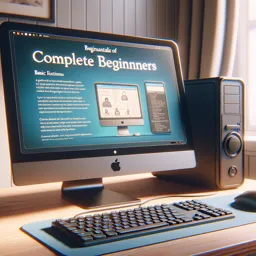Learning about basic computer parts is critical to becoming an efficient computer user. Knowing how different parts of your computer work, how they connect to each other, and how they play a role in every task you perform on your computer can be very helpful, especially when something goes wrong. In this article, we’ll explore the basic parts of your computer to help you better understand how it works.
The Case The case is the box that contains the motherboard, power supply, processor, memory, and storage drives. It can be made of plastic, metal, or a combination of both. It’s essentially the computer’s home, and in addition to protecting the components inside, it also helps keep them cool and functioning properly.
Motherboard The motherboard is the core component of your computer and connects all other components together. It is responsible for controlling the communication between the processor, memory, storage units and input and output devices. The motherboard also contains expansion slots that allow you to add additional components like graphics and sound cards.
Processor (CPU) The processor, or Central Processing Unit (CPU), is the “brain” of the computer and is responsible for performing all calculations and processes. It is made up of multiple cores, each of which can process a different task simultaneously.
Memory (RAM) Memory, or Random Access Memory (RAM), is where the computer temporarily stores data and programs in use. It’s like a workspace for the processor and the more RAM you have, the more programs you can run at the same time without your computer slowing down.
Storage Drive The storage drive is where your computer permanently stores all of your files and programs. There are two main types of storage units: hard disks (HD) and solid state drives (SSD). Hard drives are cheaper but slower, while SSDs are faster but more expensive.
Video card The video card is responsible for controlling the display of images on the monitor. There are two ways to connect the monitor to the graphics card: via the VGA port (an analog connection) or via an HDMI or DisplayPort port (a digital connection). Graphics cards also come with their own dedicated memory, which is used to store images and videos.
Input and Output Devices Input and output devices are the components that allow you to interact with your computer. Mouse and keyboard are the most common input devices, while output devices include monitor, speakers and printers.
Conclusion Knowing the basic parts of the computer is essential for any computer user. This allows you to troubleshoot simple problems, upgrade hardware, and improve your computer’s performance. Also, if you are planning to build your own computer, having a basic understanding of these parts will be an advantage.
In summary, these are the basic computer parts you should know: case, motherboard, processor, memory, storage unit, graphics card, and input and output devices. By understanding how each component works, you can make better purchasing decisions and perform basic maintenance to extend the life of your computer. And of course, it can also help you to become a more confident and experienced computer user.





















